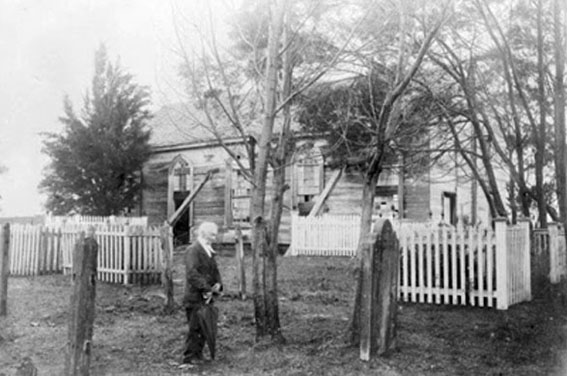Millennium Project
by Jon Malings
For some, as yet unknown, reason Joseph Matthews decided to become a missionary to the Maori in New Zealand. In 1830, when he was 21 years old, he attended the Church Missionary Society’s college in Islington, London, in preparation for his posting. Little was known about New Zealand at that time, which was considered a dangerous posting for a missionary due to the reported cannibalism.
On the 18th of March 1831 he set sail for Australia on a convict ship, the “Argyle”, acting as chaplain, which saved the Society paying the cost of his passage. Joseph arrived in Sydney 6 months later on September 17th, and spent some months living and working with Reverend J.C.S. Handt who directed him to reorganise the Infant and Sunday schools "in order to put them on an equal footing with the Schools in England." In a letter back to the CMS, Handt noted the important work done by Matthews in this regard.
Joseph only wrote one letter to the CMS while in Sydney, dated 30th September 1831, two weeks after he arrived, with only two paragraphs describing his time there. He also recounts a five week stay in Hobart, where he met Governor Arthur who "spoke in the most feeling manner about the poor Natives of V.D.Land". (Matthews to Coates, 30 September 1831). In an earlier letter from Rio de Janeiro he described his uncomfortable and eventful passage on the convict transport Argyle (Matthews to Coates, 28 May 1831). All of his voluminous fifty year correspondence from New Zealand is in the Church Missionary Society’s papers held at the University of Birmingham, England.
In March 1832 Joseph sailed from Sydney to New Zealand aboard the Porcupine. The ship docked at Paihia, a port in the Bay of Islands in the far north of New Zealand. From there Joseph made his way overland to the mission station at TeWaimate where he assisted the Rev. Richard Davis, teaching in his school before travelling north to the Kaitaia region to set up his own station with the help of William Gilbert Puckey. In 1833 he married Mary Anne Davis, Richard’s daughter.
At that time Kaitaia was inaccessible except by boat. Immediately to the south are the hills of the Mangamuka Ranges which form a natural physical and weather barrier. When, in 1835, the Beagle visited Paihia to discharge his brother Richard Matthews, Darwin and Fitz-Roy travelled to Waimate, presumably with Richard. It was there that Joseph met with Darwin, who noted in his diary:
Mr. [Joseph] Matthews informed me that one forest only thirty-four miles in width, and separating two inhabited districts, had only lately, for the first time, been crossed. He and another missionary, each with a party of about fifty men, undertook to open a road, but it cost more than a fortnight's labour!
Joseph remained at Kaitaia for the rest of his life, developing the mission station, building schools, hospitals and the Church of St. Saviours. He died there in 1895, aged 87 and is buried in St. Saviours graveyard, nearby the Church he founded.
 |
Joseph and Mary Anne had six children. Many of their descendants still live in the Kaitaia district. Visit the Kaitaia website to see many more historic pictures in their photo gallery.
The photograph of the Reverend Joseph Matthews is from the collection of Ian Walker of Kaitaia with thanks. Ian's wife Anne is the 4 * great grand daughter of Joseph Matthews.